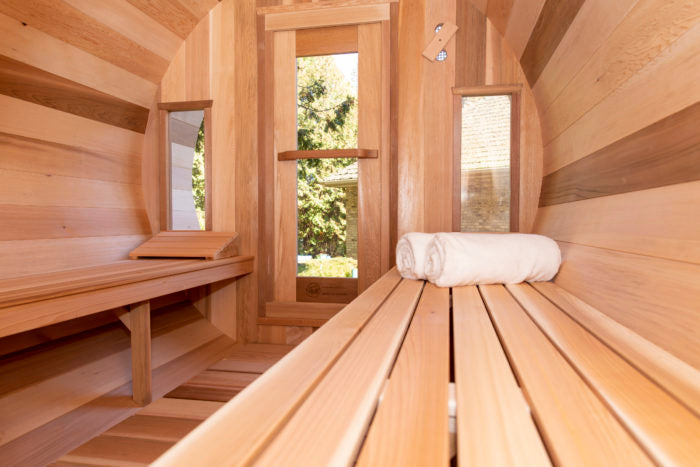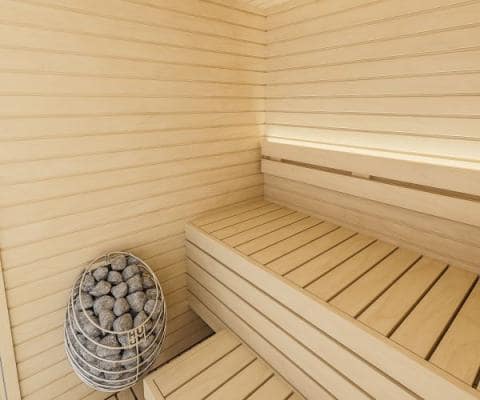Traditional Sauna - Questions
Traditional Sauna - Questions
Blog Article
Unknown Facts About Traditional Sauna
Table of ContentsHow Traditional Sauna can Save You Time, Stress, and Money.The Buzz on Traditional SaunaSome Known Details About Traditional Sauna Some Of Traditional Sauna
Most of the weight lost in a sauna is water loss and is re-gained upon rehydrating. Without an uncertainty sauna can be a crucial component of a healthy and balanced weight loss program. To check out the distinctions in between traditional and IR saunas, I will certainly divide these into verifiable, theoretical, and fabricated differences.Thus, the hottest point in the saunawhich goes to the ceiling straight above the sauna heateris generally between 185 and 190 F. Traditional Sauna. Claims that a standard sauna exceeds 200 F is simply not real and not applicable for electric saunas sold in the US. The temperature level for a far-infrared sauna is normally set in between 120 and 140 F; nonetheless, unlike the typical sauna, the goal in and IR room is not to attain a heat
Since of this, the temperature distinction is virtually unnecessary, because profuse sweating results in both sauna types, yet the method of warming the body is various. In an IR sauna the bather will feel warm and will certainly sweat a lot, however at much lower temperature levels. Thus, if the goal is to invest longer periods of time in the sauna, the IR sauna is an excellent option.

How Traditional Sauna can Save You Time, Stress, and Money.
When the heat is attained, the elements cycle on and off to preserve the high temperature. Many standard sauna individuals enjoy pouring water over the rocks to develop steam to elevate sauna moisture degrees. The advantages of putting water over the rocks include: making the area much more comfy, moistening the nasal passages, and enabling the use of aromatherapy by mixing necessary oils with the water.
In a far-infrared sauna, the warm front penetrate the body to efficiently heat up the body and elevate the body core temperature level. To accomplish this increased temperature level, Far-infrared emitters produce infrared power which is close to the same wavelength as that which the body normally emitsoften referred to as the "Crucial Array" of 7 to 14 microns), so the power is well gotten by the body.
When the energy enters the body, it causes the body temperature to boost and inevitably results in perspiration. In an infrared sauna it is essential for the emitters/heaters to continue to be on virtually regularly. Given that there is no mass of rocks to retain warm, the sauna will certainly cool down if the emitters shut down.
As pointed out over, the sauna bather in an infrared space desires to place himself in front of operating emitters to get maximum take advantage of the warm. The heating check over here time for both rooms can be extremely different, depending upon how the spaces are utilized. For a standard sauna, a bather must enable 30-40 minutes for the room to achieve a wanted temperature and to appropriately pre-heat the rocks.
Traditional Sauna Fundamentals Explained
A well built sauna will usually attain a temperature level of 150-160 F in about 30-40 mins. For hotter temperature levels, the space might need to warmth for a longer duration.
To some, 15 mins was "wasted" while the infrared energy heated the wood panels as opposed to heating up a body, while others discover a pre-heated room to be extra comfy and believe an elevated beginning temperature is essential to begin sweating. The size of advised usage for each room is around the same (10-15 mins per session); nevertheless, as a result of the reduced air temperature levels and the capacity to really feel the effects of infrared warm quicker than a typical sauna, it is not unusual for a person to invest an overall of 20-30 mins in an infrared sauna.
Typical saunas tend to be bigger (for this reason utilize more electrical energy) than infrared saunas, although conventional saunas are definitely offered in one and two person sizes as well. For a two-person traditional sauna, 5x6 or 5x7 size is most prominent. The top bench can comfortably seat 2 or 3 individuals and is likewise long enough to lie down throughout the sauna session.


The typical expense per kWH of electrical power in the united state is about $0.11, so a 4.5 kW heating unit will certainly cost about $.50 to run for one hour, if the heating system runs continually for one hour. Typically a sauna heating unit will run for 75% of the very first hour and 50% of subsequent hours on considering that the components cycle once the set temperature is accomplished.
Traditional Sauna for Beginners
A 2 person far-infrared space is usually literally smaller sized than a conventional sauna, frequently regarding 4' x 4' or smaller sized. The IR home heating system is generally 1.5-1.7 kW utilizing a 120 volt 15 amp plug-in solution. Since the room can be utilized faster than a sauna area, we will presume the space is used for to of an hour consisting of warm up time.
There is a rarely talked about difference in the social experience in between the 2 spaces. While our society has lost a few of the social advantage of the typical sauna experience, it see can be very socially fulfilling. From family time in the sauna, to heart-felt conversations with loved ones, to sauna partiesthe conventional sauna experience can lead to intimate mingling.
Most greater end infrared spaces consist of colored light treatment, sound systems find out and full-glass fronts.
Report this page